|
 
- 现金
- 62111 元
- 精华
- 26
- 帖子
- 30437
- 注册时间
- 2009-10-5
- 最后登录
- 2022-12-28

|
| Can HBV Be Cured? - "Single hepatocyte analysis in HIV-HBV co-infection shows transcriptional silencing"
|
|
| Reported by Jules Levin
CROI 2019 March 4-7 Seattle
"Our reasoning is that if a hepatocyte is not transcribing cccDNA, then that hepatocyte is not making viral antigens to be detected by the immune system. So, even if tolerance is reversed, the immune system would not see that hepatocyte as infected. It would still see the hepatocytes that are transcribing cccDNA as infected and eliminate those. We think of these silently-infected hepatocytes as similar to latently-infected T cells in HIV.
The new antivirals would not work either unless they are directly eliminating cccDNA such as a CRISPR-cas9 or an anti-viral that destabilizes cccDNA. An anti-viral that works later in the life cycle would not be active if the cccDNA is not transcribing."
WEBCAST:
http://www.croiwebcasts.org/console/player/41191?mediaType=slideVideo&&crd_fl=0&ssmsrq=1553181672012&ctms=5000&csmsrq=5051
Program Abstract
Hepatitis B virus (HBV) is a leading cause of liver failure and hepatocellular carcinoma worldwide. Due to shared modes of transmission, ~10% of people living with HIV also have chronic HBV infection. HBV cannot be cured because the long-lived covalently closed circular DNA (cccDNA) resides in every infected hepatocyte. However, little is known about HBV replication in human livers.
Here, we used single-cell laser capture microdissection (scLCM) and droplet digital PCR (ddPCR) to characterize the HBV replication landscape in situ in humans. We quantified cccDNA, total HBV DNA, and pre-genomic RNA (pgRNA) in each hepatocyte, adjusting for intracellular cytoplasmic RNA 7SL.
We examined a median (range; total) 255 (52 – 290; 1100) hepatocytes that were individually isolated from five HIV/HBV co-infected persons with increasing exposure to dually-active antiretroviral therapy (DAART) against HIV and HBV (HB1-5; no exposure to >7 years of exposure). Total HBV DNA, cccDNA, and pgRNA were quantified in each cell. The proportion of infected hepatocytes (cccDNA positive) decreased with longer DAART exposure from 100% (HB1) to 33% (HB5)(Table). The median (range) total HBV DNA per cell was 1 cp/cell (0-112 cp/cell); of cccDNA was 1 cp/cell, (0-31 cp/cell); and of pgRNA was 38 cp/cell, (0-1919 cp/cell). The amounts of cccDNA, total HBV DNA, and pgRNA significantly decreased in infected cells with longer DAART duration (p<0.005 for all targets). HBV transcription (pgRNA) did not correspond with cccDNA levels in the same cells (p>0.05). Additionally, we identified cells that contained cccDNA but not pgRNA, defined here as transcriptionally silent, that accumulated with longer DAART from 0% (HB1) to 46.1% (HB5) of infected hepatocytes (Table).
Our results indicate that the HBV viral landscape is highly dynamic, and that there is heterogeneity in transcription of cccDNA including complete silencing. Understanding transcriptional silencing in HBV-infected hepatocytes may be critical to emerging immunotherapy and could be exploited to develop a functional cure.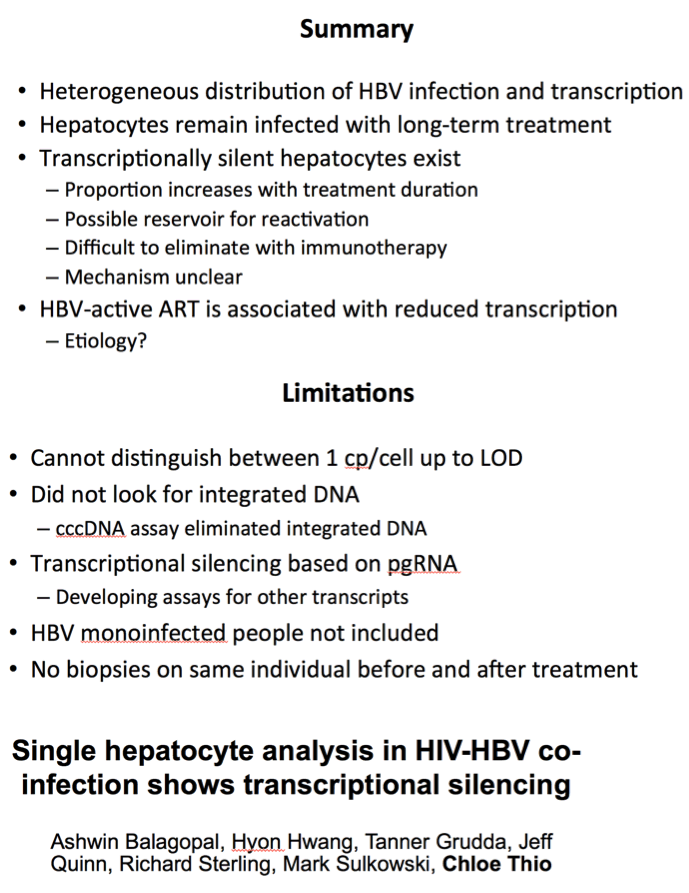
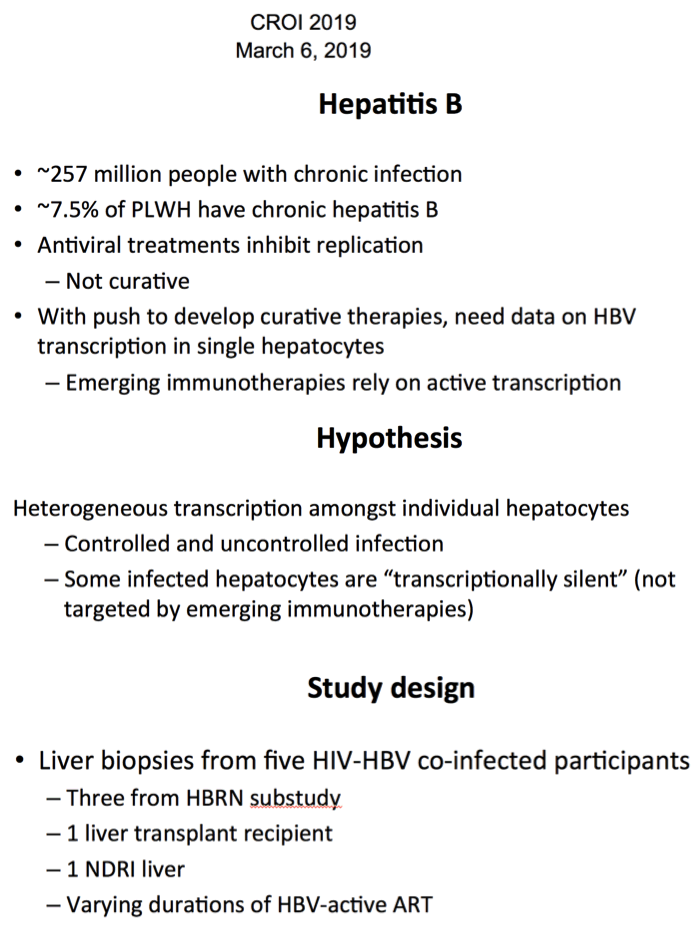
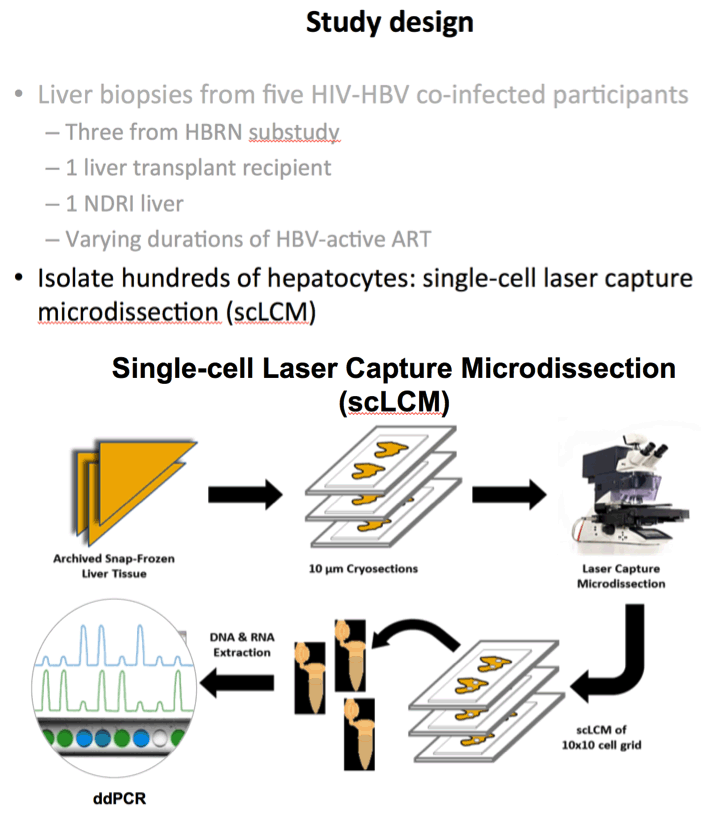
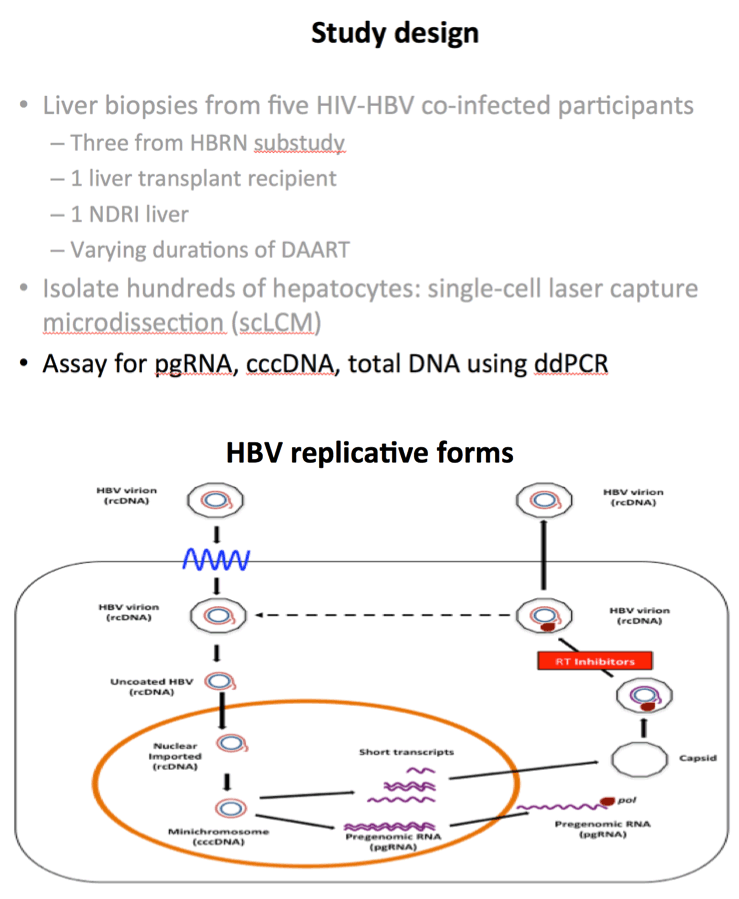
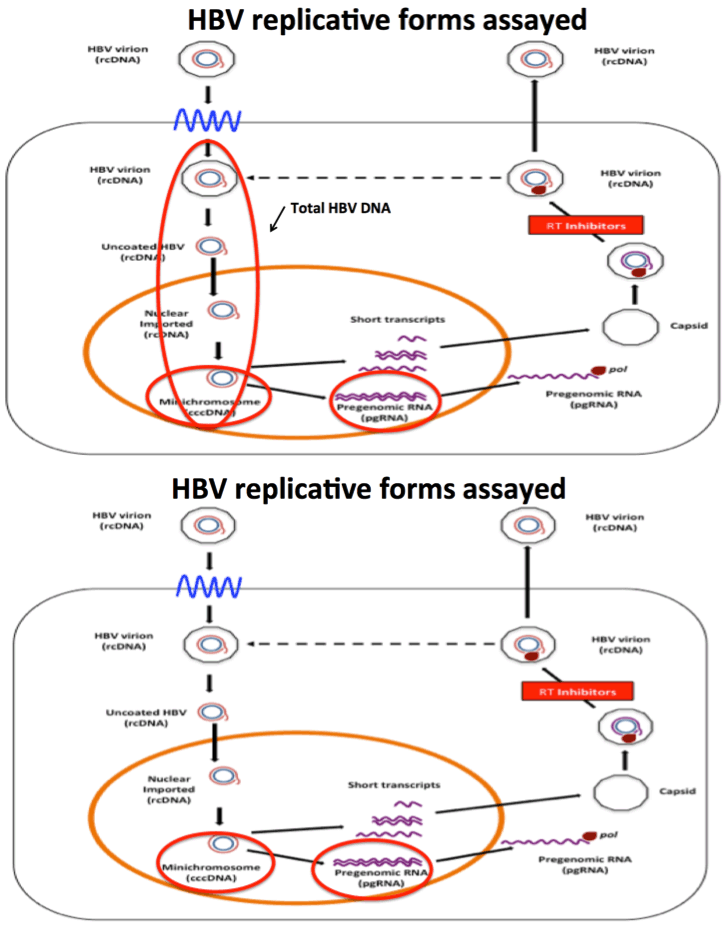
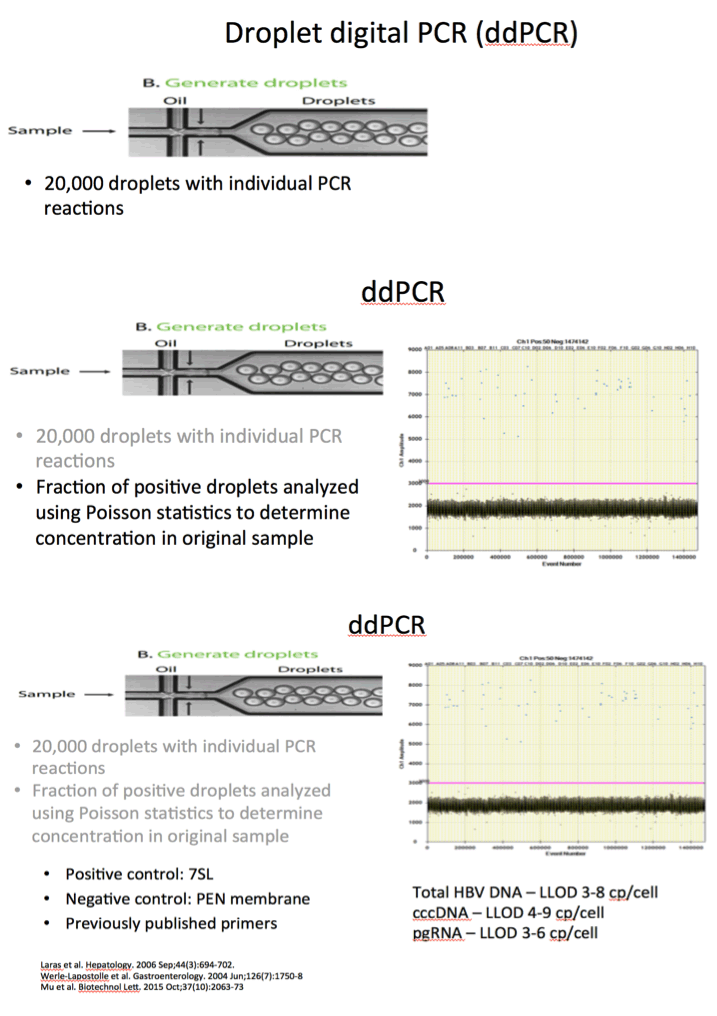
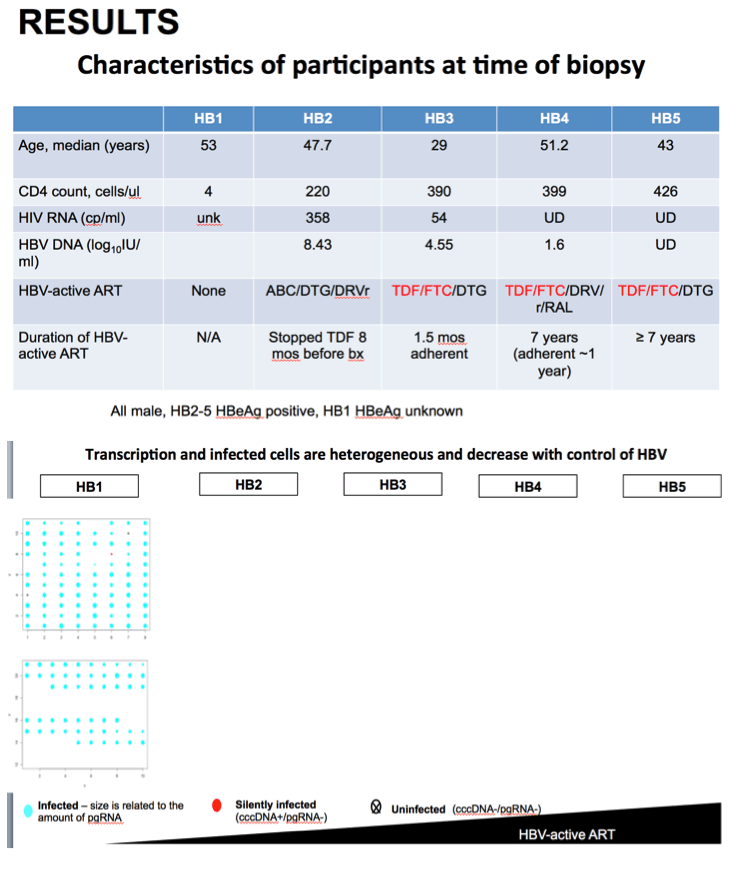
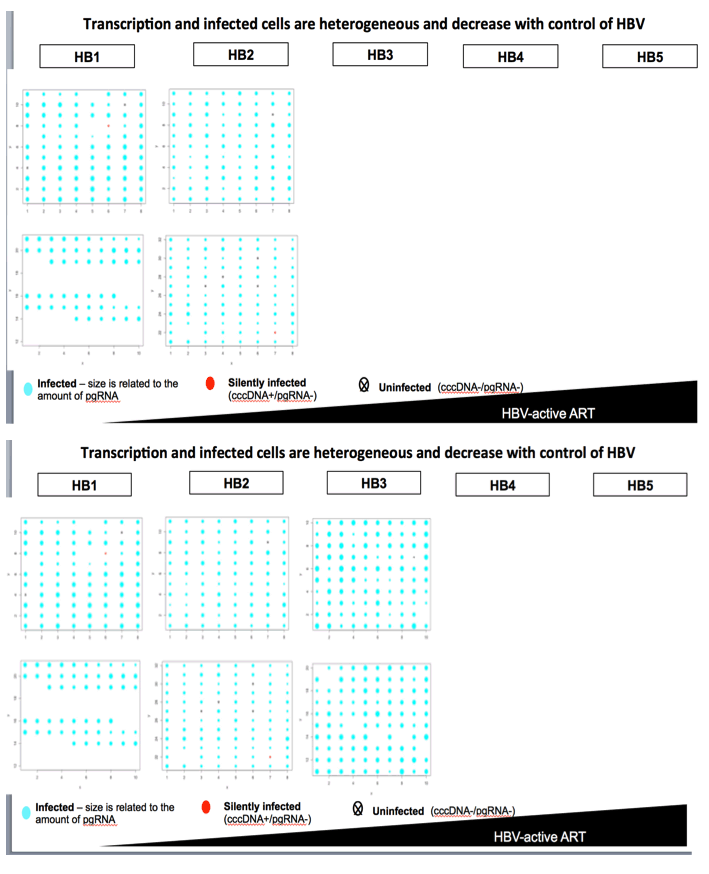
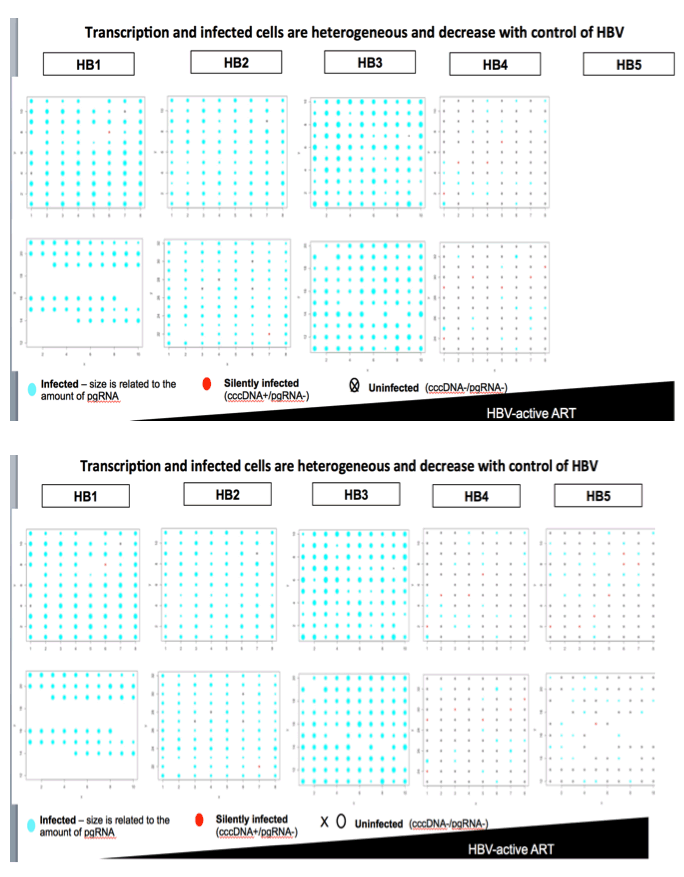
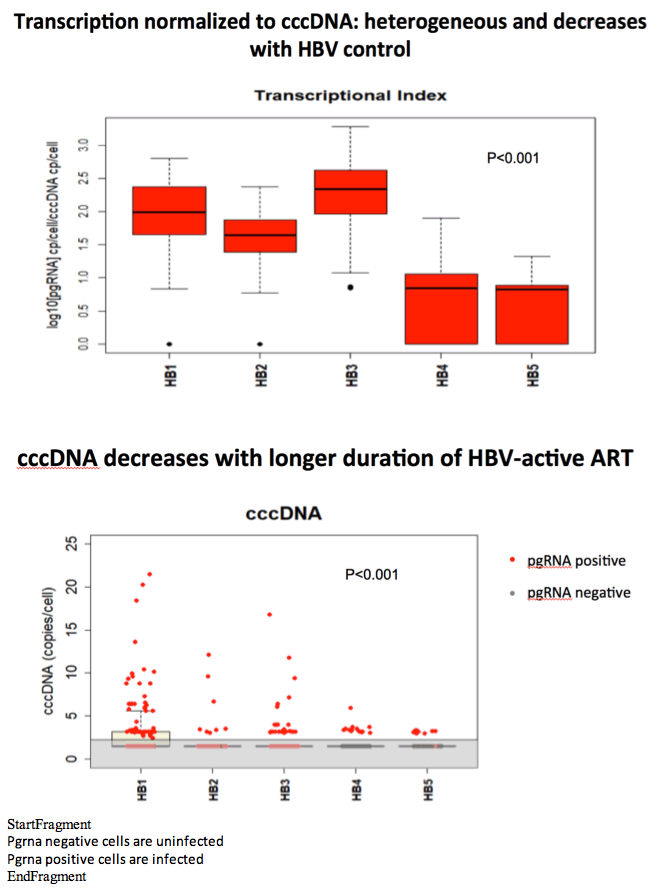
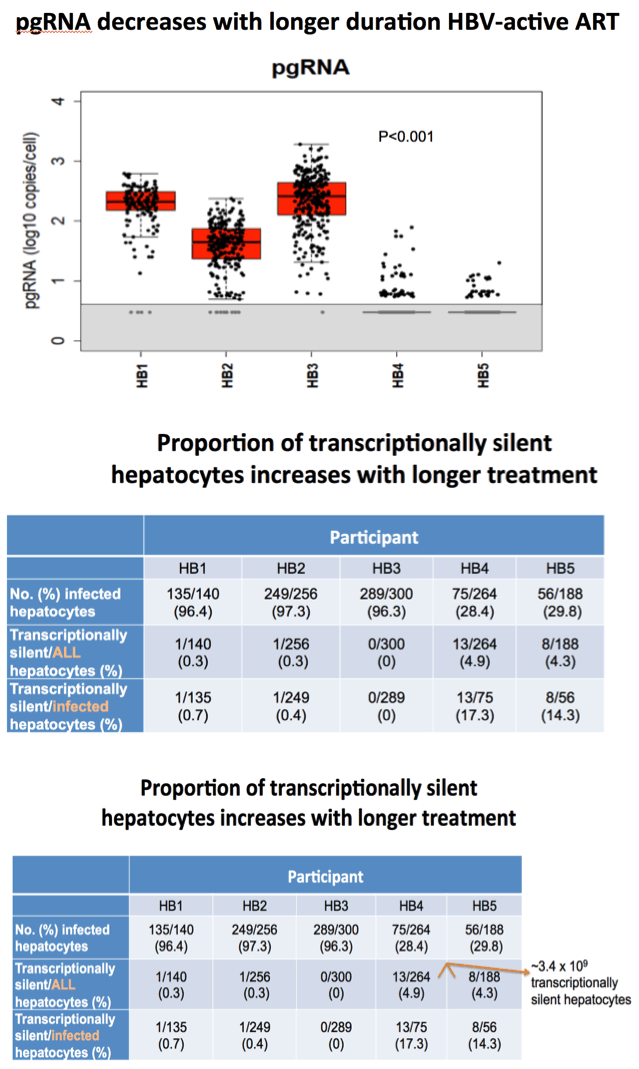
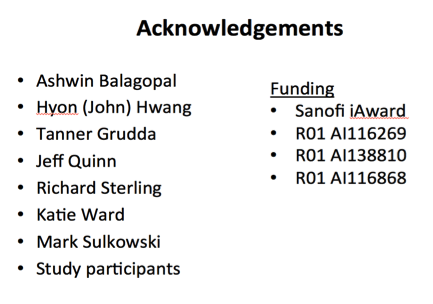
|
|
|  |  |
|
|